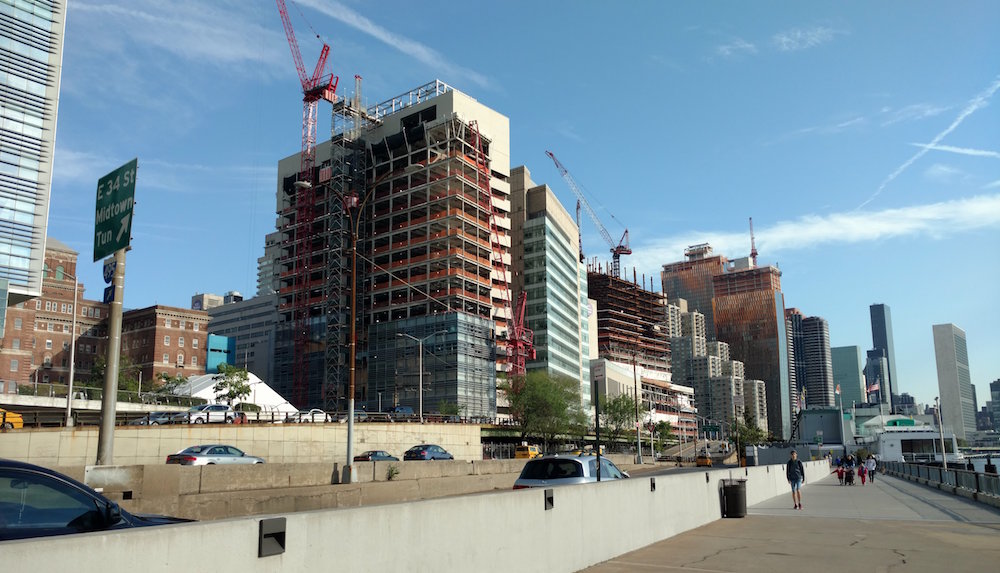The American Institute of Architects (AIA), National Institute of Building Sciences (NIBS) and 38 other leaders of America’s design and construction industry, released a report this week on progress made on the resilience front since the Resilience Building Coalition announced the Building Industry Statement on Resilience two years ago.
The Resilience Building Coalition also released a set of guiding principles to help the building industry adopt resilient design and policies. These include developing and advocating for codes and policies that advance resilience; developing “whole-systems resilient design” approaches for the built environment; and providing guidance, beyond the baseline life-safety codes, that recognizes the importance of fortifying property for individual and community resilience. Since the initial signing, the Coalition has added 19 new signatories, listed below.
The report includes results from a survey of signatories about how their work has been impacted by the Building Industry Statement on Resilience. Among the survey’s major findings:
- A majority of signatories report that they have “become more aware of their unique role in achieving resilience” since committing to the statement, which has clearly catalyzed the integration of resilience goals into existing organizational frameworks.
- Almost 30% of respondents have seen an increase in resilience as a priority within their organizations.
- More than two-thirds of respondents listed high-performance buildings as an initiative they were most interested in advancing.
- More than half of the responding signatories have used the Statement to “advance their organizational mission statement/values,” as well as “provide support and/or validation for moving forward on organization initiatives.” This shift in organizational priorities has led to concrete action.
- Respondents reported more than 40 initiatives they have begun that support the resilience focus areas committed to in the Statement.
The report is an outgrowth of a landmark agreement made in May 2014, in which leaders of America’s design and construction industry agreed to promote resilience in contemporary planning, building materials, design, construction and operational techniques as the solution for making the nation’s aging infrastructure more safe and secure.
“Resilient design places architects at the center of the solution, with particular emphasis on the private, non-governmental sectors," said American Institute of Architects CEO Robert Ivy, FAIA. “I would like to congratulate my fellow leaders in the design and construction sector for joining together to make sure resiliency is not viewed as just a fad but remains front and center in our efforts moving forward.”
The list of organizations that have signed the joint statement on resilience is as follows (new organizations are marked with an asterisk):
- The Air Barrier Association of America*
- American Council of Engineering Companies
- American Institute of Architects
- American Planning Association
- American Society of Civil Engineers
- American Society of Interior Designers
- American Society of Landscape Architects
- American Society of Plumbing Engineers
- American Wood Council*
- ASHRAE
- Associated Builders and Contractors
- Associated General Contractors of America
- BuildStrong Coalition*
- Building Owners and Managers Association
- Congress for New Urbanism*
- Concrete Reinforcing Steel Institute*
- Construction Specifications Institute*
- EcoDistricts*
- Federal Alliance for Safe Homes*
- Green Building Initiative*
- Illuminating Engineering Society*
- Insurance Institute for Business & Home Safety*
- International Association of Plumbing and Mechanical Officials*
- International Code Council
- International Facility Management Association
- International Interior Design Association
- Lean Construction Institute
- National Association of Home Builders
- National Association of Mutual Insurance Companies*
- National Concrete Masonry Association*
- National Fire Protection Association*
- National Institute of Building Sciences
- National Insulation Association*
- National Ready Mixed Concrete Association*
- National Society of Professional Engineers
- Portland Cement Association*
- Royal Institution of Chartered Surveyors
- US Green Building Council
- U.S. Resiliency Council*
- Urban Land Institute
Related Stories
Sponsored | Steel Buildings | Nov 7, 2022
Steel structures offer faster path to climate benefits
Faster delivery of buildings isn’t always associated with sustainability benefits or long-term value, but things are changing. An instructive case is in the development of steel structures that not only allow speedier erection times, but also can reduce embodied carbon and create durable, highly resilient building approaches.
Fire and Life Safety | Oct 4, 2022
Fire safety considerations for cantilevered buildings
Bold cantilevered designs are prevalent today, as developers and architects strive to maximize space, views, and natural light in buildings. Cantilevered structures, however, present a host of challenges for building teams, according to José R. Rivera, PE, Associate Principal and Director of Plumbing and Fire Protection with Lilker.
Resiliency | Sep 30, 2022
Designing buildings for wildfire defensibility
Wold Architects and Engineers' Senior Planner Ryan Downs, AIA, talks about how to make structures and communities more fire-resistant.
Building Team | Jun 13, 2022
Partnership rethinks emergency shelters to turn them into sustainable, resilient homes
Holcim and the Norman Foster Foundation have struck a partnership to rethink emergency shelters to turn them into sustainable and resilient homes.
Green Specifications | May 12, 2022
MG2’s Sustainable Materials Evaluation System
Learn how MG2’s Sustainable Materials Evaluation System helps clients, prospects, and staff choose the most environmentally feasible materials for their building projects. Candon Murphy, LEED GA, Assoc. IIDA, Design Lab Manager and Materials & Sustainability Specialist with MG2, speaks with BD+C Executive Editor Rob Cassidy.
Sponsored | BD+C University Course | May 10, 2022
Design guide for parapets: Safety, continuity, and the building code
This course covers design considerations for parapets. The modern parapet must provide fire protection, serve as a fall-protective guard, transition and protect the roof/facade interface, conceal rooftop equipment, and contribute to the aesthetic character of the building.
Sponsored | BD+C University Course | May 5, 2022
Designing with architectural insulated metal wall panels
Insulated metal wall panels (IMPs) offer a sleek, modern, and lightweight envelope system that is highly customizable. This continuing education course explores the characteristics of insulated metal wall panels, including how they can offer a six-in-one design solution. Discussions also include design options, installation processes, code compliance, sustainability, and available warranties.
Sponsored | BD+C University Course | Apr 19, 2022
Multi-story building systems and selection criteria
This course outlines the attributes, functions, benefits, limits, and acoustic qualities of composite deck slabs. It reviews the three primary types of composite systems that represent the full range of long-span composite floor systems and examines the criteria for their selection, design, and engineering.
Wood | Apr 13, 2022
Mass timber: Multifamily’s next big building system
Mass timber construction experts offer advice on how to use prefabricated wood systems to help you reach for the heights with your next apartment or condominium project.
AEC Tech Innovation | Mar 9, 2022
Meet Emerge: WSP USA's new AEC tech incubator
Pooja Jain, WSP’s VP-Strategic Innovation, discusses the pilot programs her firm’s new incubator, Emerge, has initiated with four tech startup companies. Jain speaks with BD+C's John Caulfield about the four AEC tech firms to join Cohort 1 of the firm’s incubator.

















